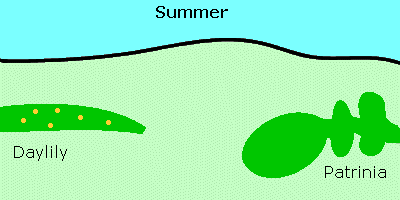|
|
Complete Life Cycle Animation
In climates which are sufficiently mild, the asexual cycle can continue through the winter on daylilies and the sexual stage on Patrinia is not required for survival of the disease from year to year as it would be in colder winter climates. Completion of the sexual cycle results in genetic recombination, increasing the likelihood that daylily rust will overcome rust resistance in some daylily cultivars, however new pathotypes have already been reported in the United States (Buck, J. W., 2013, Identification of Pathotypes in the Daylily Rust Pathogen Puccinia hemerocallidis. Journal of Phytopathology).
© 2003-2014 text and animation by Susan Bergeron |
